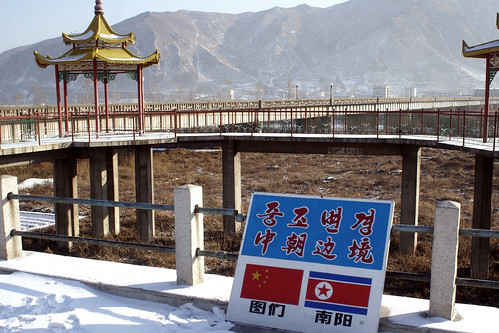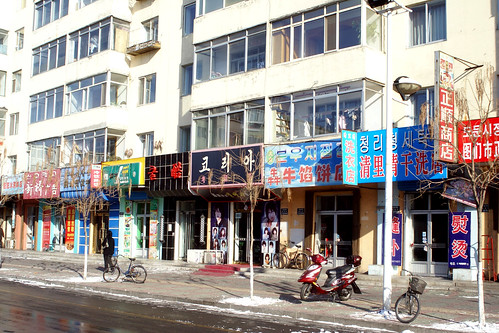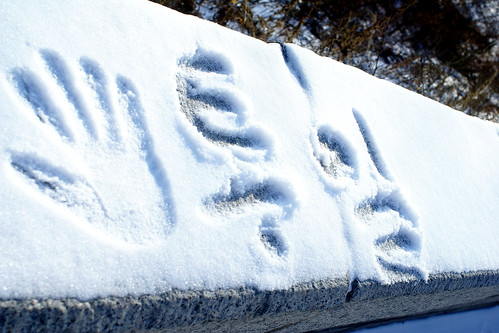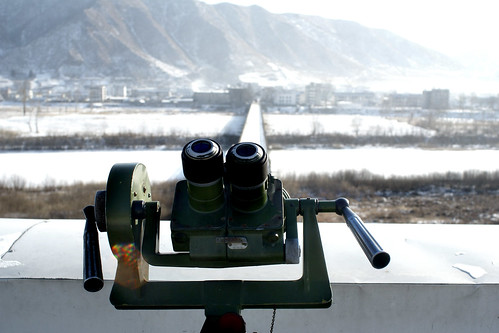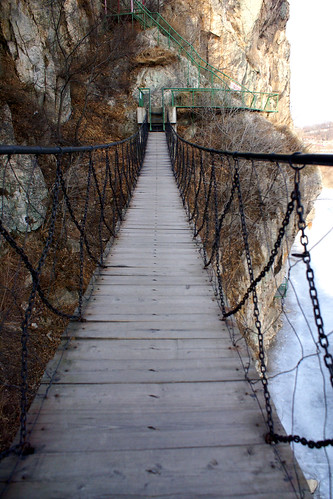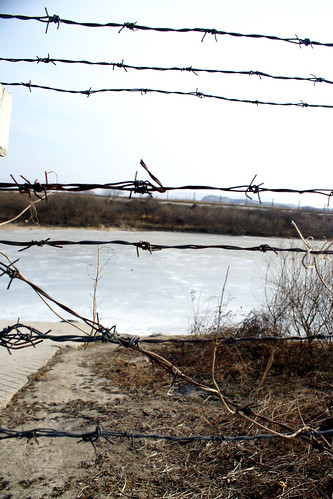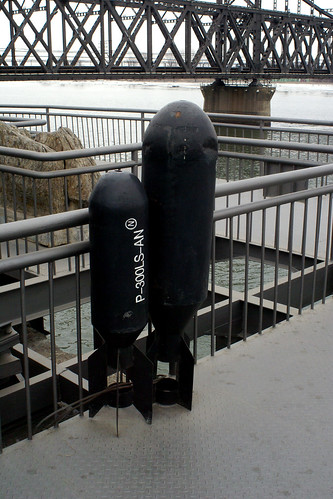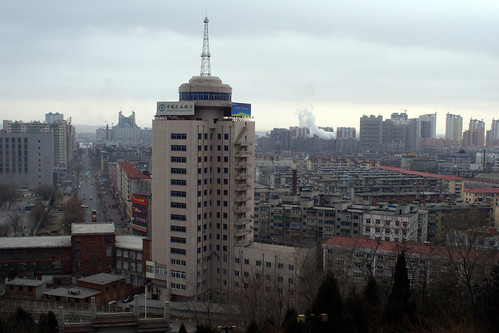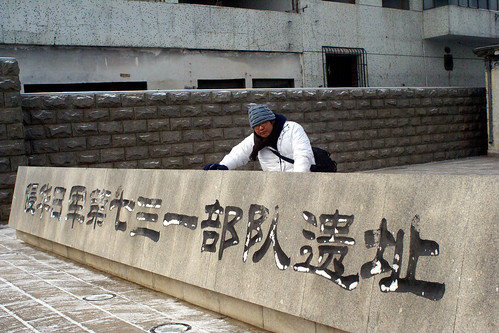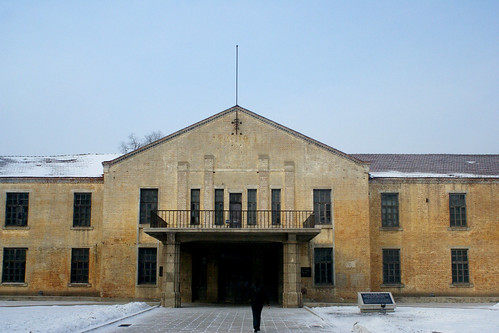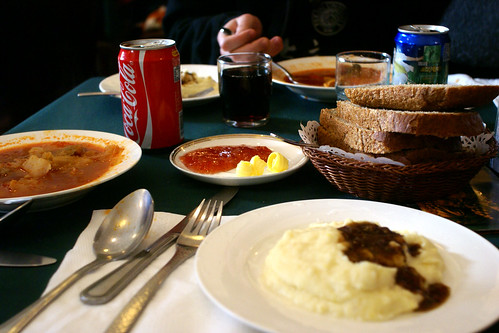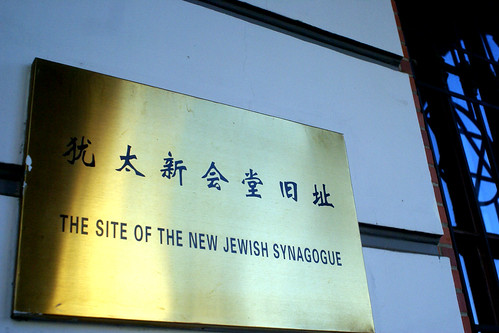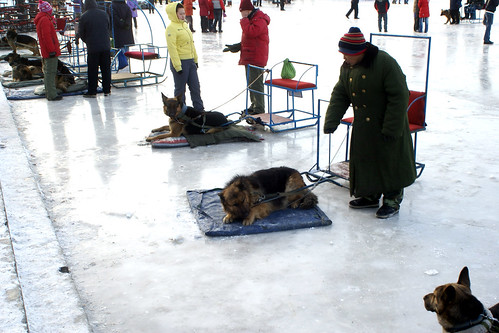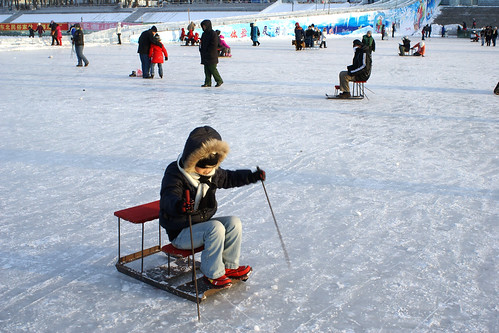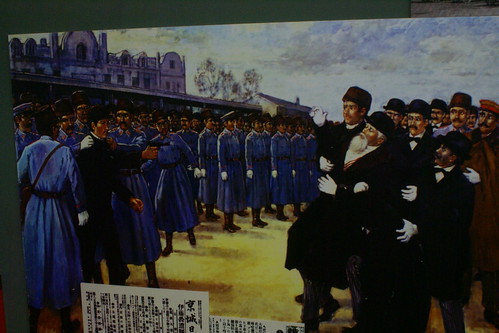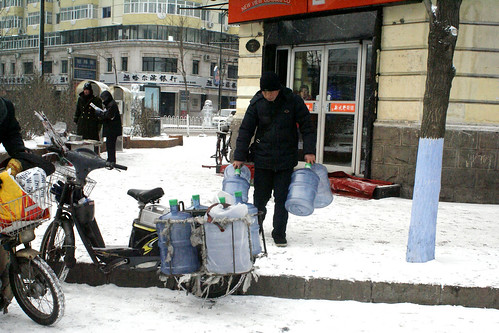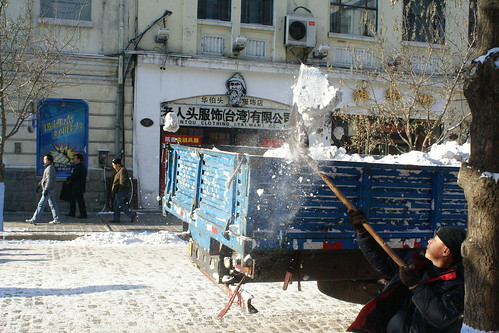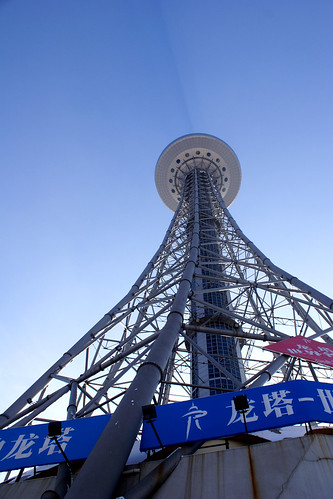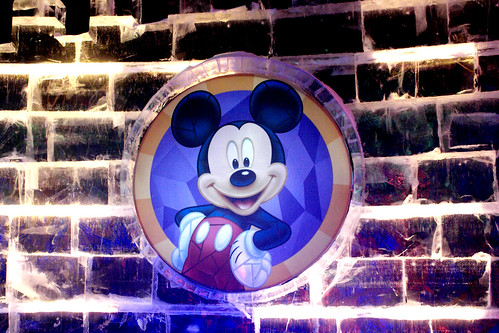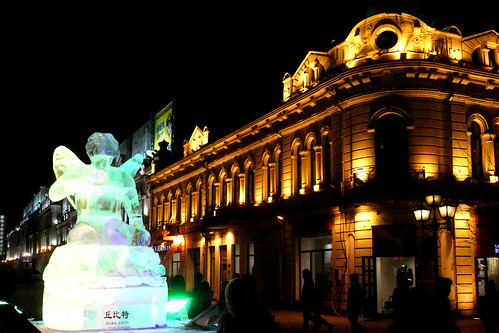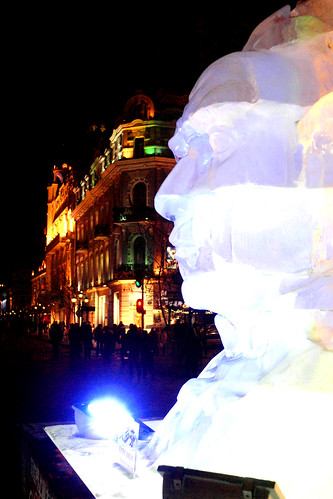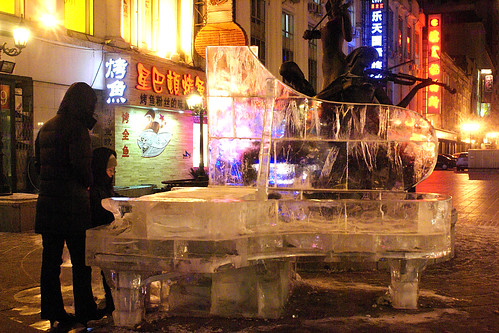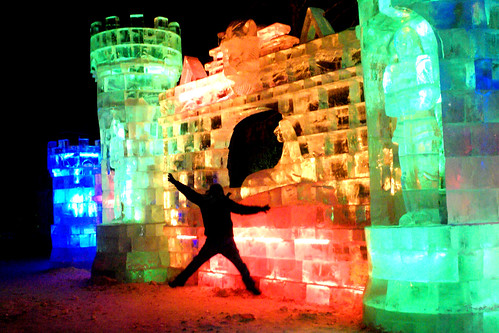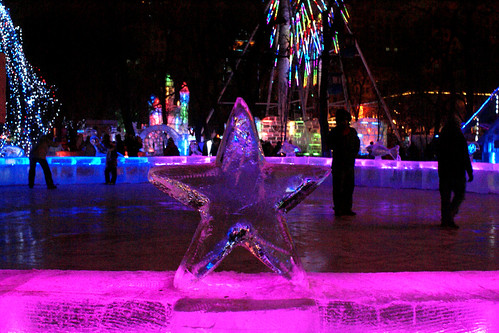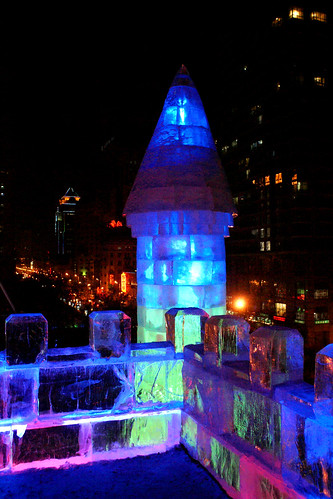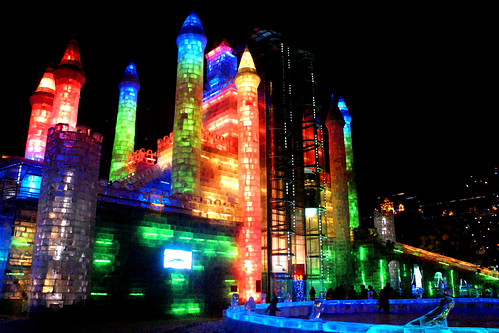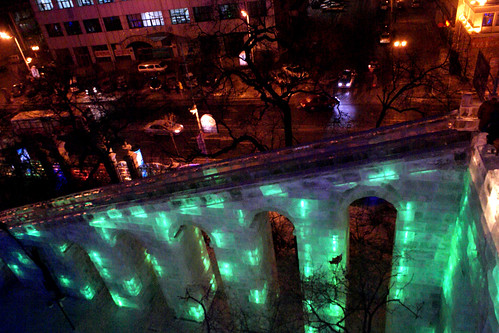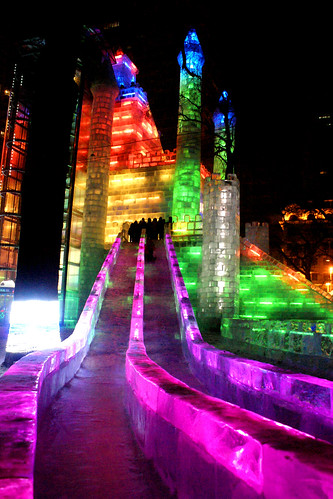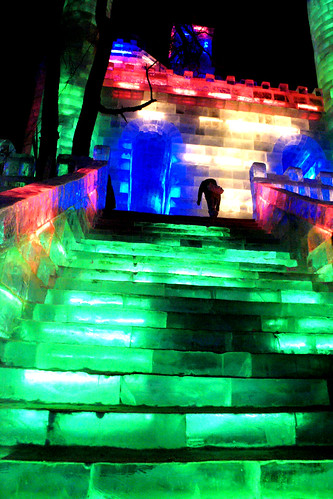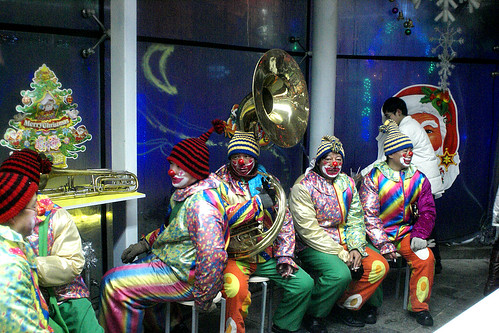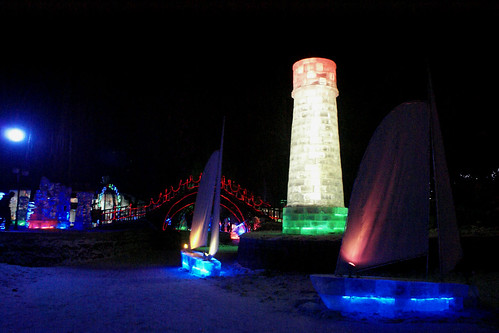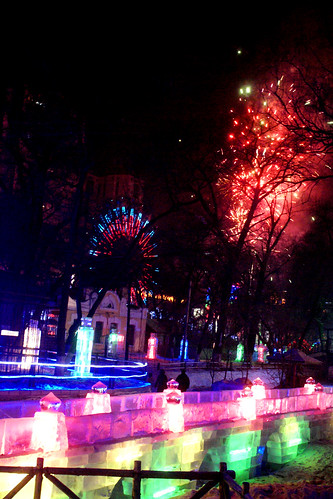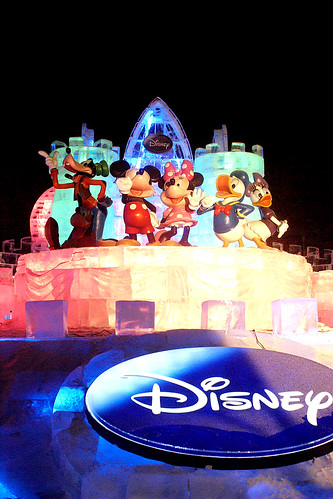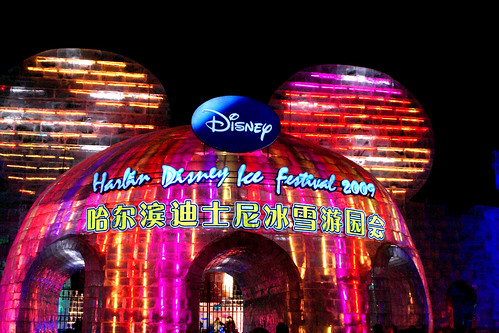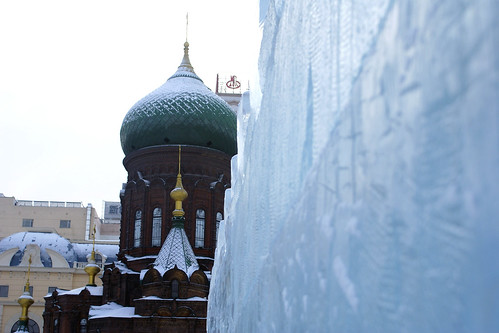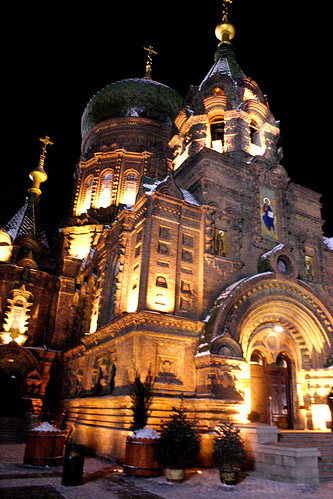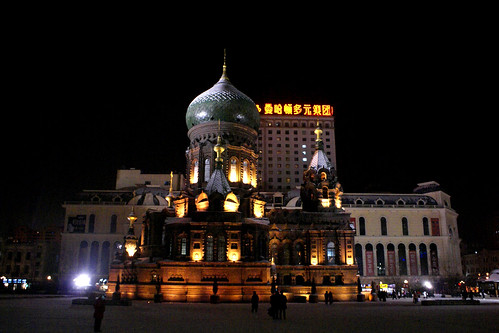Jay K.

[Only the half of the bridge is Chinese territory and the other is North Korea's]
Ep31. A letter from the Sino-North Korea border
I left Ha’erbin and took a 16 hour-long hard seat train ride to Tumen. Tumen is a very small town located at the border of China and North Korea. It was the first town in China where I couldn’t find any McDonald’s or KFC. I was surprised by the fact that every billboard in the town was bilingual of Chinese and Korean. A number of Korean minorities live around this region. I also met lots of Korean minorities on the train. They mostly spoke Mandarin but randomly spoke some Korean words. It was interesting to watch them.
The reason why I visited this small town was to see North Korea. Tumen was one of the border cities that give visitors an opportunity to glimpse the most closed country in the world: North Korea. The most famous tourist spot in the town was the China-North Korea friendship bridge where the half of the bridge is Chinese territory and the other is North Korean. Although the guidebook says because of North Korea, Tumen is a famous tourist city, when I went there I felt I was only tourist in the town that day. Tumen unlike any other city in China was very quiet and not crowded.
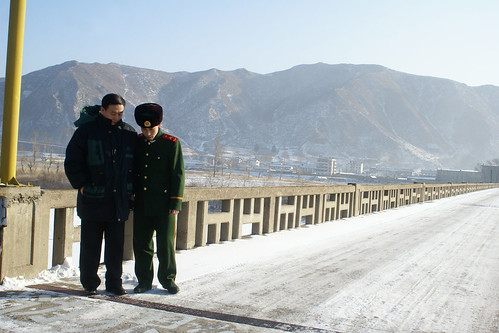
[A Chinese visitor and a Chinese soldier looking at the borderline]

[Me at the border]
I got there around 8am and walked straight to the bridge. The bridge was only 10 minutes walk from the railroad station. I soon got to Tumen River which is the natural boundary between two countries. The bridge was of course guarded by Chinese soldiers. I thought I had to show my ID and register to visit the bridge, but however I didn’t need them. I just had to buy the ticket—that was actually funny. I walked on the bridge with other Chinese visitors and soldiers. We stop at the half point of the bridge. There was a line drawn at the half point, however due to the snow, it was hardly visible.
Taking just one more step, I could enter the most closed nation on the world and the territory of the only official declared foe of South Korea. If you are a South Korean citizen, you can get arrested by just visiting North Korea (whether the visit was allowed or not allowed by North Korean). It is the same as how it is illegal to visit Cuba as an American citizen. I just looked over to the other side of the bridge. It was so close from where I was standing. Growing up in South Korea, I thought North Korea is very far away from where I live, but it was right there. It was right there.
After visiting the bridge, I walked along the river. The river was unguarded and frozen, so I could easily cross the border—obviously I didn’t try that. To be honest, I was a bit scared of visiting the border, because there were a number of historical accidents at the border such as kidnapping or murder. However, the border was very peaceful and quiet. It was even beautiful with white snow. To tell the truth, this peaceful border tempted me to crossover.

[Me]
I sat on the river side and started to write the journal. China is so huge that I had to ride a train for hours to get point B from point A. Compared to China, Korea is so small, but why are we divided and fighting for this tiny land? Why is that? Again, there was only a question, but no answer to the question.
I had to walk away from the river reluctantly because I had to leave the city that afternoon to visit another Sino-North Korea border city, Dandong. Tumen is located at the east end of the border and Dandong is located at the west end of the border line. After stopping over at Shenyang, I arrived at Dandong after sunset.
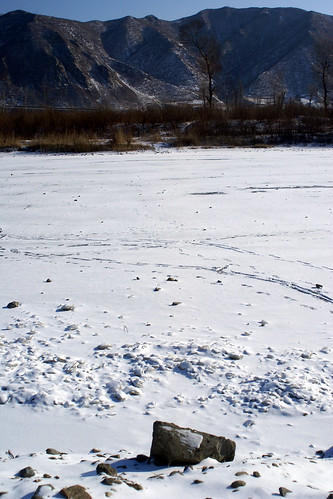
[Looking over North Korea from the Tumen border tower]
The hostel I was going to stay at was unfortunately out of business, so I had to walk around the city looking for a place to sleep. It was the last stop of my winter trip and I was almost out of money. I didn’t bring my bank card because I was afraid that I would lose it. I didn’t have enough money to pay hotel deposit. At last, I found a hotel where I could stay. It was a fancy hotel. It was the most expensive place I stayed during my trip. I slept on train for preceding two nights, so I had a nice and comfortable night at the hotel; it was amazing!
The next morning, I started the day early because I only had a day in Dandong. I first climbed the farthest east part of the Great Wall (namely Tiger Mountain Great Wall) which was 40 minutes away from the city by bus. Chinese government claims this wall to be the farthest east section of the original Great Wall built during the Ming dynasty, nonetheless Korean historians claims this wall to be built by Koreans in order to fight against Chinese invasion. I won’t say who’s right and wrong, I just climbed the wall. It was much shorter and lower than the parts of the Great Wall I climbed before. It was early in the morning, so I was only one who was climbing at the time. It was really nice to breathe fresh air at the top of the Wall.
The next morning, I started the day early because I only had a day in Dandong. I first climbed the farthest east part of the Great Wall (namely Tiger Mountain Great Wall) which was 40 minutes away from the city by bus. Chinese government claims this wall to be the farthest east section of the original Great Wall built during the Ming dynasty, nonetheless Korean historians claims this wall to be built by Koreans in order to fight against Chinese invasion. I won’t say who’s right and wrong, I just climbed the wall. It was much shorter and lower than the parts of the Great Wall I climbed before. It was early in the morning, so I was only one who was climbing at the time. It was really nice to breathe fresh air at the top of the Wall.
At the top, I could have a clear view of North Korea. The long wall is stood along the river, which is also the natural boundary between two countries. The name of the river is also well known to you guys who studied U.S. history before—Yalu River. As you guys know, the US and UN troops advanced to Yalu River during Korean War and encountered millions of Chinese red army rushing and had to retreat back.

[The border]
I walked along the border line. The border was silent. It was also unguarded like the border at Tumen, in which I could crossover. I could, but didn’t. I came back to the city at noon and visited the riverside. Yalu River is wider than Tumen River so that North Korea is farther away. There was a functional bridge connecting the two sides of the river, which is used for trades. I saw few trucks coming from and going to N. Korea. Parallel to that bridge, there was a broken bridge. The bridge was bombed by US airstrike and cut in half during Korean War. The bridge is well preserved by CCP for the historical evident showing that the Americans invaded Chinese territory during the war. It is now a tourist site where you can pay to enter.
I walked to the broken part of the bridge. North Korea was closer at the end of the bridge. When I was crossing the bridge, it started to snow. Dandong was as cold as Ha’erbin whereas Tumen was much warmer. The snow made me to imagine the bloody war that happened here a half century ago. It was also freezing and snowing hard when they were battling at this edge of the Korean peninsula. The Koreans, Americans, Chinese and multinational army were all here and fought to death. Some soldiers died not by enemy’s bullets but because of the unreasonably cold weather.
I also took a boat cruising around Yalu River. I met a group of Korean college students travelling. When I was planning the trip, I thought there would be many Korean tourists at the borders, however there weren’t many, maybe because of the weather. The boat went right up to the other side of the river. Unlike Tumen’s opposite side, the city across from Dandong is considered to be one of the big and flourishing cities in N. Korea. I could have a glimpse of N. Korean people working at the riverside. It was the first time that I was actually seeing N. Koreans.
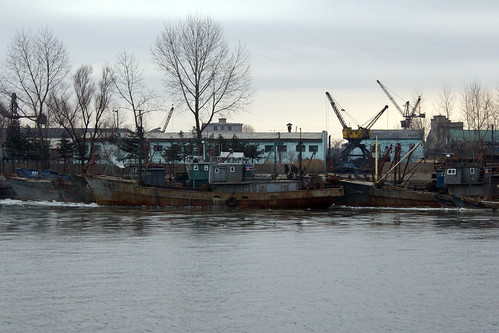
[I don't know this is the actual bomb that cut the bridge in half]
The boat ride was short and I soon had to come back to China. After visiting two border cities and taking a close look at N. Korea, I realized how difficult the unification of my nation will be. I felt that North Korea was geographically close but at the same time the nation was extremely closed so that it seemed far away. I don’t know how to describe this. I felt N. Korea to be very close to me, but also very far away from me. I was depressed thinking about this and walked away from the bridge and Yalu River.
The last place I visited during the winter trip was the Museum to Commemorate US Aggression. It was a memorial museum for Korean War. The museum was full of propagandas saying that imperialistic America invaded Korea and threatened people of CCP. Thus, it was just for China to help N. Korea, but that’s exactly contradictory to what S. Koreans think and what I learned. If China didn’t help, two Koreas could be united easily at the end of the war.
I don’t want to give you a lecture on Korean War and the history of Korea. Anyway, the museum was decent and owned many photographs and other stuff from the war. It was also larger than I thought. I also have visited the Korea War memorial located at Washington DC. The Chinese memorial had a very different atmosphere from that of the States. What I realized from seeing the museum was that during the war China only cared about how it proudly could fight against America and Western imperialists, but it didn’t care about Korean peninsula and its future.

[The two great leaders]

[North Korean working at the riverside]
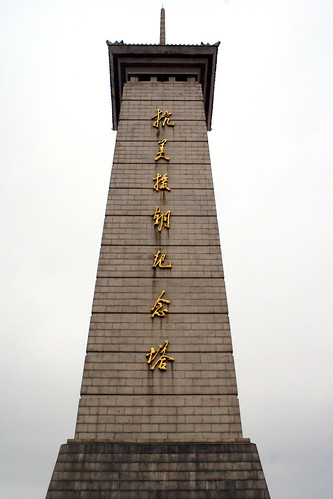
[The war memorial]
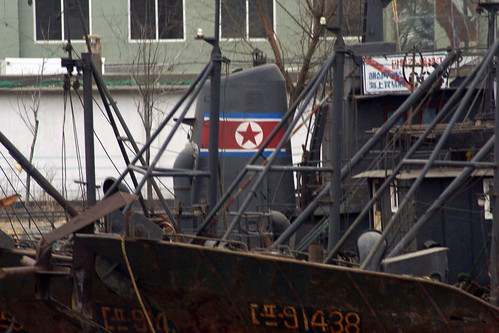
[N. Korean ship]

[N. Korean bulding and the propaganda saying Our Great Comrade Kim Il Sung Will Be With Us Forever (Kim Il Sung is the current N. Korea dictator's father who founded N. Korea, died more than 10 yrs ago)]

What is a nation? I had to ask myself again as I was leaving the museum. Why do people fight against each other and why are we divided? To be honest, I am very nationalistic and patriotic, but I know for the better future, it is not a good thing. I hope all boundaries between nations perish one day. I hope in the future, people can be different but at peace with each other. For now, I don’t have any solution for that, but just have hope.
It was getting dark and I had to head the train station in order to catch my train for Beijing. I want to apologize for this lengthy letter talking about so many random thoughts. I will write more about my trip in the next episode. It will be the last one for my winter trip. I am now with my grandma in Korea.
[Mao is saying goodbye to me as I'm leaving Dandong]
